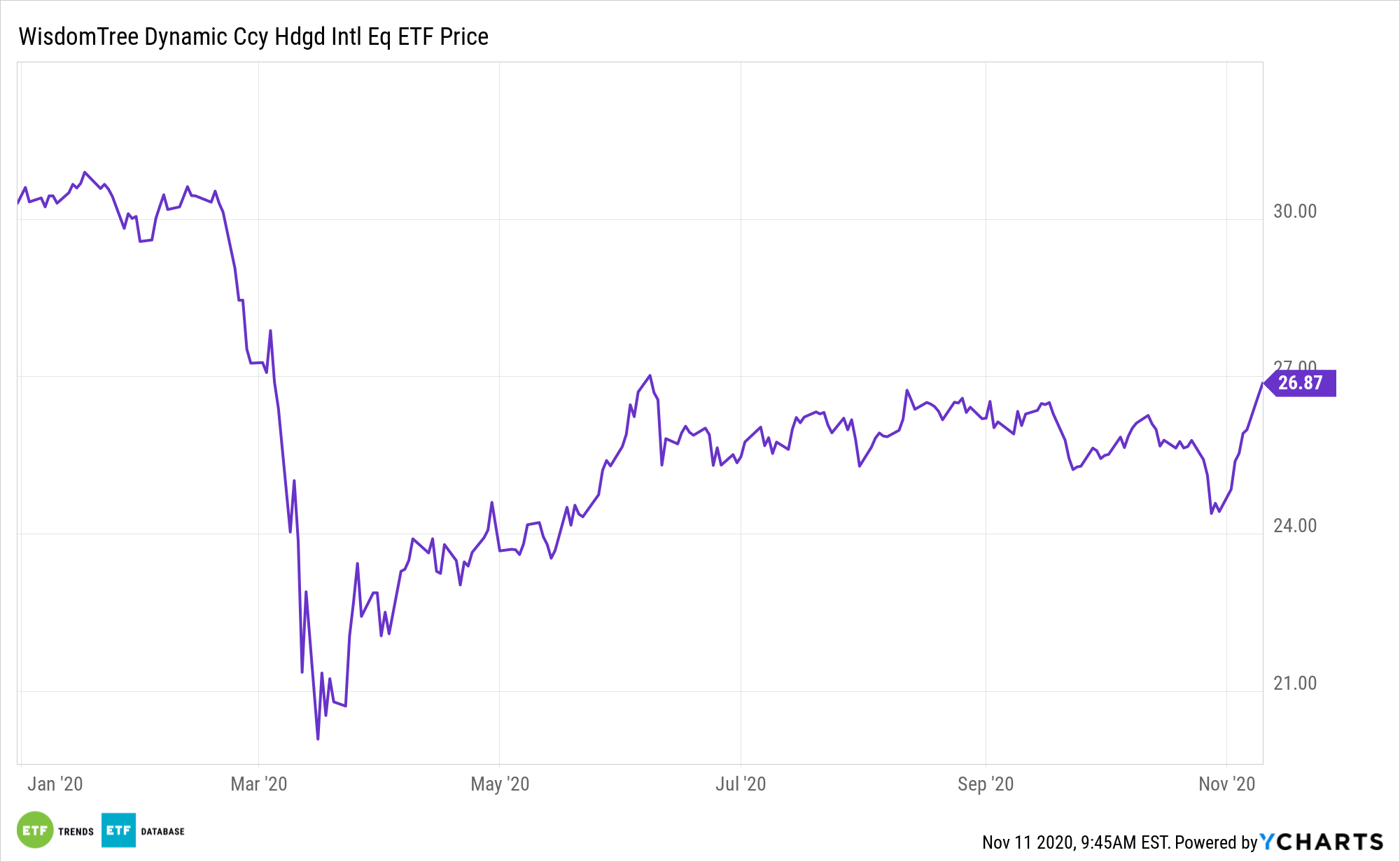International equities, including ex-US developed markets fare, are expected to get their momentum back with Joe Biden in the White House.
While there’s only so much an American president can do to jolt overseas markets, advisors can position for an ex-US developed markets resurgence with WisdomTree’s Developed International Model Portfolio.
“This model portfolio is designed for investors with a long-term horizon looking for exposure to a broad universe of Developed International equities primarily using factor focused ETFs,” according to the issuer. “The selected ETFs provide certain factor tilts that have the potential to generate excess return relative to comparable cap-weighted benchmarks over longer-term holding periods. The strategies may use both WisdomTree and non-WisdomTree ETFs.”
Modeling for Multi-Factor Success
With more looking to foreign markets as a way to diversify away from U.S. equities, investors will face certain risks associated with international exposure. Nevertheless, there are a number of smart beta global exchange traded fund strategies that can help investors better manage risks. The five funds in the Developed International model portfolio included multi-factor, dividend, and currency hedged strategies.
International markets have the potential to provide growth and diversification in different economic cycles, and with valuations on the group compelling, the asset class could be ready to shine as the new White House takes a less combative tone toward European trading partners.
One of the components in the Developed International model portfolio is the WisdomTree Dynamic Currency Hedged International Equity Fund (CBOE: DDWM).

Unlike other popular currency-hedged ETF offerings with a static foreign exchange hedge, the Dynamic Currency Hedged Equity Fund will hedge currency fluctuations in the relative value of the foreign currencies against the USD, ranging from a 0% to 100% hedge based on interest rate differentials, valuations, and relative price momentum of the foreign currencies compared to the USD. This may help the so-called dynamic currency-hedged ETF adjust to changes in the dollar ahead.
A fully hedged portfolio position has historically diminished returns when the U.S. dollar depreciates or international currencies strengthens. Since a hedged portfolio shorts foreign currencies, investors would miss out on the added boost if international currencies appreciate, a relevant point considering the dollar is weak thanks to Federal Reserve policy.
For more on how to implement model portfolios, visit our Model Portfolio Channel.
The opinions and forecasts expressed herein are solely those of Tom Lydon, and may not actually come to pass. Information on this site should not be used or construed as an offer to sell, a solicitation of an offer to buy, or a recommendation for any product.








